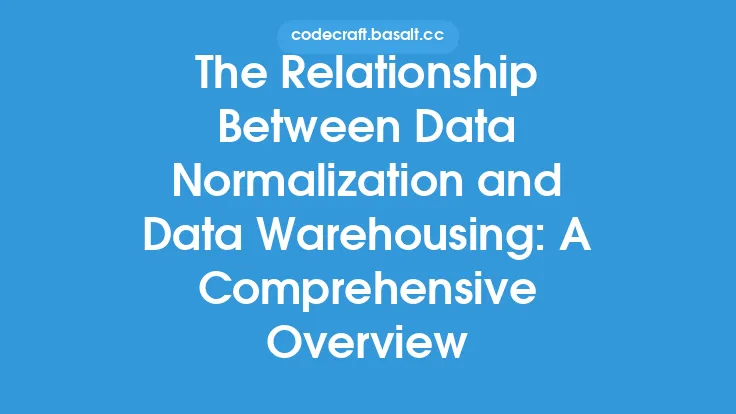Data storage and database architecture are two fundamental components of database systems that are intricately linked. The way data is stored and managed has a direct impact on the overall performance, scalability, and reliability of a database. In this article, we will explore the interplay between data storage and database architecture, and how they influence each other.
Introduction to Database Architecture
Database architecture refers to the overall design and structure of a database, including the relationships between different components such as data models, schema, and storage systems. A well-designed database architecture is essential for ensuring that data is stored and retrieved efficiently, and that the database can scale to meet the needs of growing applications. Database architecture is typically composed of several layers, including the physical storage layer, the logical storage layer, and the application layer. Each layer plays a critical role in determining how data is stored, managed, and accessed.
Data Storage and Its Impact on Database Performance
Data storage is a critical component of database systems, and its performance has a direct impact on the overall performance of the database. The type of storage used, such as hard disk drives (HDDs), solid-state drives (SSDs), or flash storage, can significantly affect the speed at which data is read and written. For example, SSDs are generally faster than HDDs, but they are also more expensive. The storage layout, including the organization of data on disk, can also impact performance. For instance, a well-organized storage layout can reduce the number of disk I/O operations required to retrieve data, resulting in faster query performance.
Database Architecture and Data Storage
The database architecture has a significant impact on data storage. The design of the database schema, including the relationships between tables and indexes, can affect how data is stored and retrieved. For example, a database with a large number of tables and indexes may require more storage space and may be more prone to fragmentation, which can lead to slower performance. The database architecture can also influence the type of storage used. For instance, a database that requires high levels of concurrency and transactional support may benefit from a storage system that is optimized for high-performance and low-latency, such as a flash-based storage system.
Storage Models and Their Implications
There are several storage models that can be used in database systems, each with its own implications for database architecture and performance. The most common storage models include the relational model, the hierarchical model, and the network model. The relational model, which is the most widely used, stores data in tables with well-defined relationships between them. The hierarchical model, on the other hand, stores data in a tree-like structure, with each node representing a record or a group of records. The network model stores data in a graph-like structure, with each node representing a record or a group of records, and each edge representing a relationship between them. The choice of storage model can significantly impact the database architecture and performance, as well as the complexity of the database schema.
Data Distribution and Partitioning
Data distribution and partitioning are critical aspects of database architecture that can significantly impact data storage and performance. Data distribution refers to the way data is spread across multiple storage devices or nodes, while partitioning refers to the way data is divided into smaller, more manageable pieces. There are several data distribution and partitioning strategies that can be used, including horizontal partitioning, vertical partitioning, and range-based partitioning. The choice of strategy depends on the specific requirements of the database and the characteristics of the data. For example, a database that requires high levels of concurrency and transactional support may benefit from a horizontal partitioning strategy, which can help to distribute the load across multiple nodes.
Indexing and Data Retrieval
Indexing is a critical aspect of database architecture that can significantly impact data storage and performance. An index is a data structure that improves the speed of data retrieval by providing a quick way to locate specific data. There are several types of indexes that can be used, including B-tree indexes, hash indexes, and full-text indexes. The choice of index depends on the specific requirements of the database and the characteristics of the data. For example, a database that requires fast retrieval of data based on a specific column may benefit from a B-tree index, which can provide fast lookup and insertion times.
Conclusion
In conclusion, the interplay between data storage and database architecture is complex and multifaceted. The way data is stored and managed has a direct impact on the overall performance, scalability, and reliability of a database. Database architecture, including the design of the database schema and the choice of storage model, can significantly impact data storage and performance. By understanding the relationships between data storage and database architecture, database administrators and developers can design and implement databases that meet the needs of growing applications and provide high levels of performance, scalability, and reliability.





